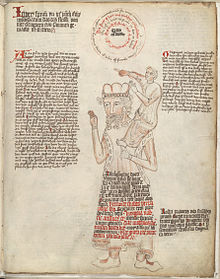An average human being generally does not change the course of humanity. An average human's mark on history, our very own mark on history, fades away within a few generations.
However there are some brilliant people whose pioneering ideas become integral to the furtherment of human society. Sir Isaac Newton, Albert Einstein, Leonardo da Vinci are examples of such visionaries.
nanos gigantum humeris insidentes
Orion carrying his servant.
Orion carrying his servant.
And an even bigger number of such visionaries have lived in ancient times, and their ideas still echo and influence us today. Aristotle, amongst other things thought, for example, of classifying senses in five groups, and although we know of senses escaping this classification, we still defer to his teachings.
Of these Giants, Heron of Alexandria, while of lesser fame, is the one that could have changed human history the most. He is considered the greatest experimenter of antiquity and his work is representative of the Hellenistic scientific tradition. His inventions include hydraulic pressure doors, the first vending machines of the world and the first wind-operated jukebox. He dabbled in many fields, from optics, to mathematics, to something akin to robotics. However his most important invention was the Aeolipile.

It was the first steam engine, more than a thousand years before our industrial revolution. His invention remained as an exhibit in a temple, its power never truly harnessed.
It took humanity over a millennium to reproduce Heron's technological advances.
This leads us to wonder: what if in a reality similar to ours, a scientist, a genius equivalent to Heron, thought of connecting his Aeolipile with a wheel, and went on to create the first trains, cars and factories. He, like Heron, would have had the skills in robotics to fully industrialize the ancient world.
It took humanity over a millennium to reproduce Heron's technological advances.
This leads us to wonder: what if in a reality similar to ours, a scientist, a genius equivalent to Heron, thought of connecting his Aeolipile with a wheel, and went on to create the first trains, cars and factories. He, like Heron, would have had the skills in robotics to fully industrialize the ancient world.
Welcome to the world of Steam-sprung, set in a world where the industrial revolution happened at 100 A.D.
